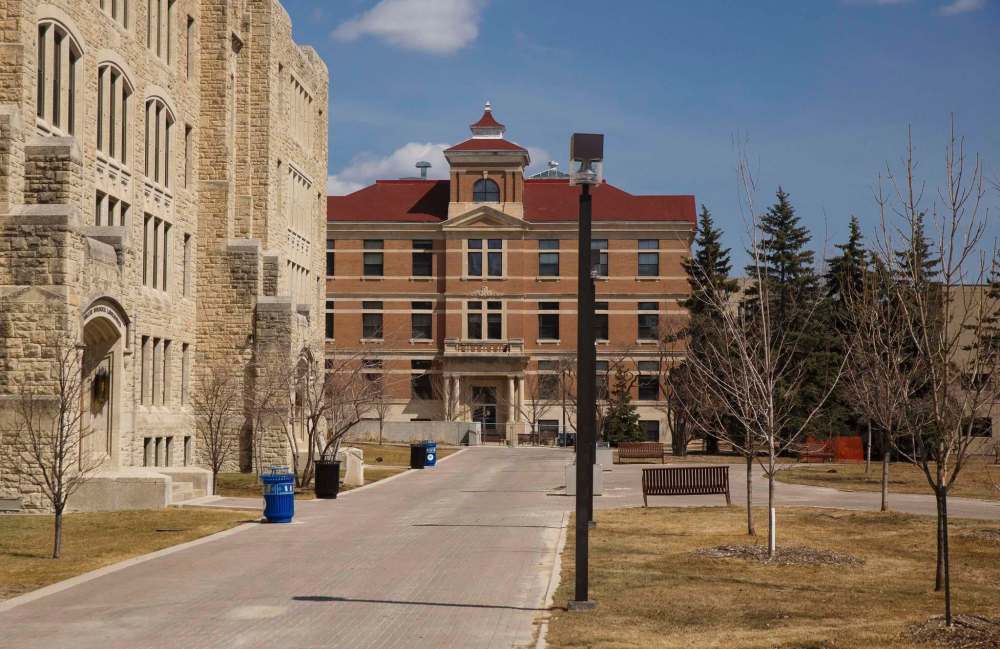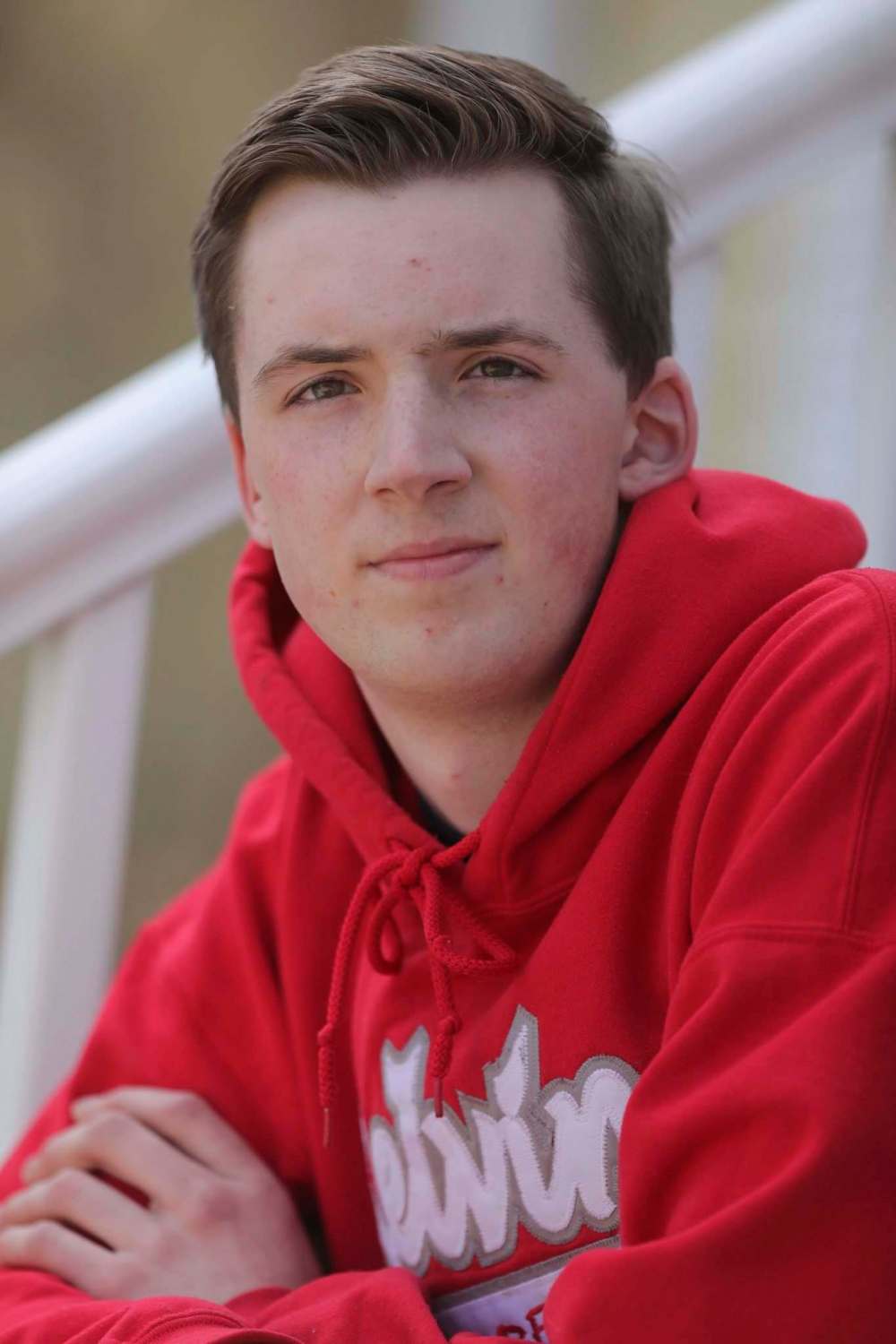Countless uncertainties for Canadian universities Post-secondary institutions struggle to adapt to pandemic disruptions
Read this article for free:
or
Already have an account? Log in here »
To continue reading, please subscribe:
Monthly Digital Subscription
$0 for the first 4 weeks*
- Enjoy unlimited reading on winnipegfreepress.com
- Read the E-Edition, our digital replica newspaper
- Access News Break, our award-winning app
- Play interactive puzzles
*No charge for 4 weeks then price increases to the regular rate of $19.00 plus GST every four weeks. Offer available to new and qualified returning subscribers only. Cancel any time.
Monthly Digital Subscription
$4.75/week*
- Enjoy unlimited reading on winnipegfreepress.com
- Read the E-Edition, our digital replica newspaper
- Access News Break, our award-winning app
- Play interactive puzzles
*Billed as $19 plus GST every four weeks. Cancel any time.
To continue reading, please subscribe:
Add Free Press access to your Brandon Sun subscription for only an additional
$1 for the first 4 weeks*
*Your next subscription payment will increase by $1.00 and you will be charged $16.99 plus GST for four weeks. After four weeks, your payment will increase to $23.99 plus GST every four weeks.
Read unlimited articles for free today:
or
Already have an account? Log in here »
Hey there, time traveller!
This article was published 24/04/2020 (2058 days ago), so information in it may no longer be current.
Graduating Kelvin High School student Coco Diamond-Burchuk was torn between three universities: Winnipeg, Manitoba and Victoria.
She chose Winnipeg in the end, citing small class sizes and an opportunity to play on the school’s ultimate frisbee team as her motivations. Now, as COVID-19 brings team sports and in-class gathering to a grinding halt, she’s feeling less certain of her decision.
“A lot of the reasons I chose it are becoming less and less valid,” Diamond-Burchuk says. “I wanted to go to a smaller school but now it might be online so it kind of loses that effect, and with sports teams, I know it’d be easier for me to make some of the sports teams but at the same time if they don’t happen it kind of changes everything.”

“A lot of the reasons I chose it are becoming less and less valid. I wanted to go to a smaller school but now it might be online so it kind of loses that effect…”
– Coco Diamond-Burchuk
Despite her determination to attend university in the fall, Diamond-Burchuk is scared to jump into the new experience in the midst of the coronavirus pandemic.
“I definitely feel really uncomfortable with it and really worried,” she says. “I would usually make my connections through sporting teams, and things like that, but if there aren’t sports then I don’t know how I’ll do that either. It’s a lot of the things that got me through high school that I was counting on for university that I can’t really see happening anymore.”
Universities across the country face countless uncertainties as they navigate a world marked by the pandemic. Restrictions on travel, dwindling revenue sources and the realities of physical distancing promise to reshape the way higher education is delivered and funded. With K-12 schools closed, incoming students have been wrapping up their Grade 12 studies from home. How those changes will be implemented is still unclear
“What we’re hearing is people want to go to university,” says University of Winnipeg president Annette Trimbee. “We’re hearing from Grade 12 students, they’re really looking forward to coming to university and they’re reaching out to ask us how they can be better prepared so they’re not starting behind.”
Trimbee says U of W staff have been brainstorming solutions that will ensure the institution stays relevant and operational through the summer and into the fall term.
At the downtown university, in-person classes came to an end on March 13, three-quarters of the way through the winter term. Professors pivoted to what Trimbee calls “alternate delivery,” and began hosting teaching and research through online platforms.
“I’m imagining we could be in for a hybrid fall and winter term, so we could have some in-person and some alternate delivery, we could have a later in-person start,” Trimbee says of the school’s fall plan so far.
The sheer number of moving parts has left university administrators with several key questions to answer. Paramount is funding, which hinges largely on student enrolment and government support. Already, the university has seen double the usual enrolment for the spring term, which Trimbee chalks up to students’ desire to keep busy in a world on pause.
“We’re hearing from Grade 12 students, they’re really looking forward to coming to university and they’re reaching out to ask us how they can be better prepared so they’re not starting behind.”
– University of Winnipeg president Annette Trimbee
“People are trying to figure out what to do; if you no longer have the job you were planning to have, you’re looking for ways to invest in yourself,” she says.
On April 21, the federal government announced $9 billion in financial support for students to help young people access post-secondary education in the fall. The Canada Emergency Student Benefit will offer $1,250 per month between May and August for students who are in school now, plan to start in September, or graduated in December 2019.
While it’s still too early to determine fall numbers, most schools don’t expect enrolment to take a drastic hit.
Representatives at Brandon’s Assiniboine Community College said they continue to see strong demand for their programs and, in some cases, wait-lists for the fall. The University of Manitoba’s fall applications have been strong so far, especially in its health programs. At Brandon University, numbers remain “pretty good,” though administrators expect a slightly smaller incoming class.

“Often in recessions we see student numbers increase — it’s not unusual that enrolment in post-secondary runs counter-cyclical to the economy,” says Brandon University president David Docherty, who anticipates running hybrid classes at his institution in the fall.
While domestic students in Canada may be able to lean on federal funding to get by, the situation is more challenging for international students.
International students often live on-campus and pay full tuition — on average more than four times what domestic students pay —but with the COVID-19 pandemic limiting cross-border travel and uncertainties surrounding on-campus life, Canadian schools expect to see less international students on their grounds.
“A lot of people, especially international students, they’re running on a limited budget, and when jobs are laid off they have no money… they have nothing to eat,” says Hamza Khan, a third-year economics student at the University of Manitoba and president of the school’s Pakistani Students’ Association.

Khan has lived in Winnipeg for four years now and says the pang of homesickness has faded. Still, in a global crisis, he wishes he could visit family in Pakistan. Other students, those who may have left their home countries for the first time this year, are facing much more dire concerns.
“Local students, they have their families here, and they can go to their parents,” Khan says. “Imagine the international students who came in their first semester over here, what they’d be going through when they have no friends, no family support, nothing.”
The University of Winnipeg’s student body typically boasts an international student population of around 14 per cent, says Trimbee. She expects that number to drop but hopes it will be counterbalanced by an increase in high school graduates choosing to stay closer to home.
MacKinley Hall, a Grade 12 student at Kelvin High School, is pursuing a social sciences degree at the University of Manitoba. He’s hopeful that by fall he’ll have an opportunity for at least some in-person classes to help ease the transition to post-secondary education.
“I’m scared to start university if it’s online,” says Hall. “Like just figuring that whole thing out, obviously it’s much harder than high school.”
Avoiding a fully online semester is top-of-mind for many Canadian schools, a predicament futurist Jim Carroll believes will require deft and decisive action on the part of university administrators.
“It’s long been my perspective that education is one of the slowest industries to change, so this is just going to require faster change and some are going to be able to do it and there’s a lot that won’t be able to,” he says.
In Carroll’s eyes, the future of Canadian universities will rest on schools’ abilities to adapt quickly to the changing needs of its students.
“You’ve got to design education programs for careers that don’t yet exist using knowledge that’s yet to come about, and you need to do it yesterday,” says Carroll of the pressures that have been weighing on the university system for the past several years.
“Now you layer on the context that there’s going to be no money, the kids aren’t going to be able to afford it, they’re all going to be under a budget crunch, so how do you fulfil that basic mandate?”
“You’ve got to design education programs for careers that don’t yet exist using knowledge that’s yet to come about, and you need to do it yesterday.”
– Futurist Jim Carroll
Besides tuition, Canadian universities’ main revenue source is government grants, which account for around 47 per cent of all university revenue according to the most recent data from Statistics Canada. In the 2017-18 year, provincial and federal governments supplied a total of $14 billion to Canadian schools.
More than three-quarters of that funding is supplied by the provinces, but as the pandemic continues to pull at provincial purse strings, that funding could decrease. In Manitoba, Premier Brian Pallister has asked universities to reduce expenditures by as much as 30 per cent over the next four months to help alleviate pressure on the province’s pocketbooks.
With less money coming in from students and the province, universities have had to lay off hourly staff and chisel away at regular costs in order to balance their current budgets.
Ultimately, universities stress their role in the economic and social health of their communities cannot go unacknowledged. Students want to be in classes, administrators say, and the hunger for higher education is not likely to be dampened by the pandemic.
The methods of delivery and educational focuses, however, are subject to change as universities strive to prepare their students for an uncertain future of changing jobs and unsteady economies.
“Universities are a key part of the innovation ecosystem, recovery will require innovation, so in some ways you could see us at the front line to recovery,” says Trimbee.
“It’s a time for all minds on deck, because it’s a lot of work to do.”
julia-simone.rutgers@freepress.mb.ca
@jsrutgers

Julia-Simone Rutgers is a climate reporter with a focus on environmental issues in Manitoba. Her position is part of a three-year partnership between the Winnipeg Free Press and The Narwhal, funded by the Winnipeg Foundation.
Our newsroom depends on a growing audience of readers to power our journalism. If you are not a paid reader, please consider becoming a subscriber.
Our newsroom depends on its audience of readers to power our journalism. Thank you for your support.










